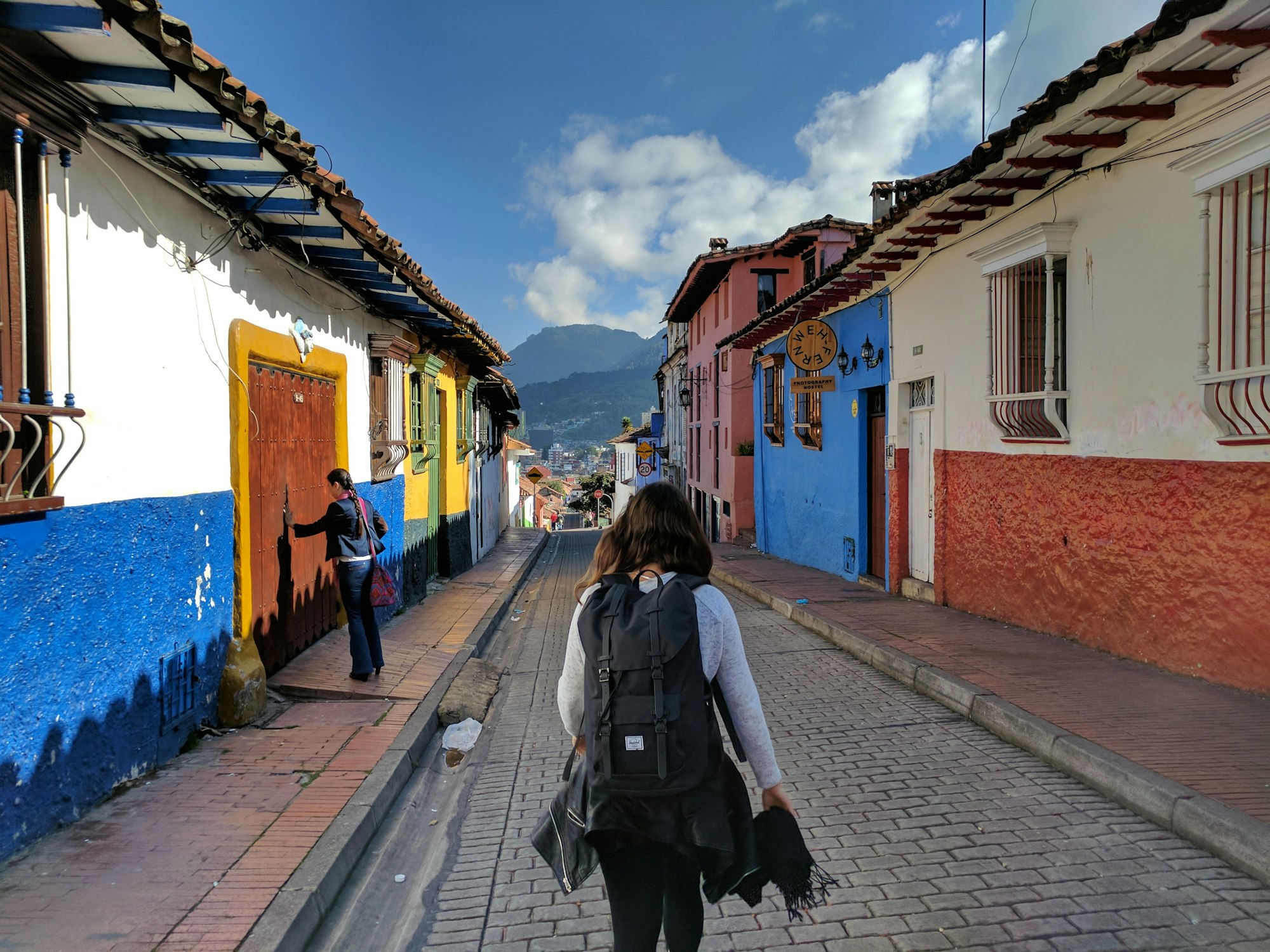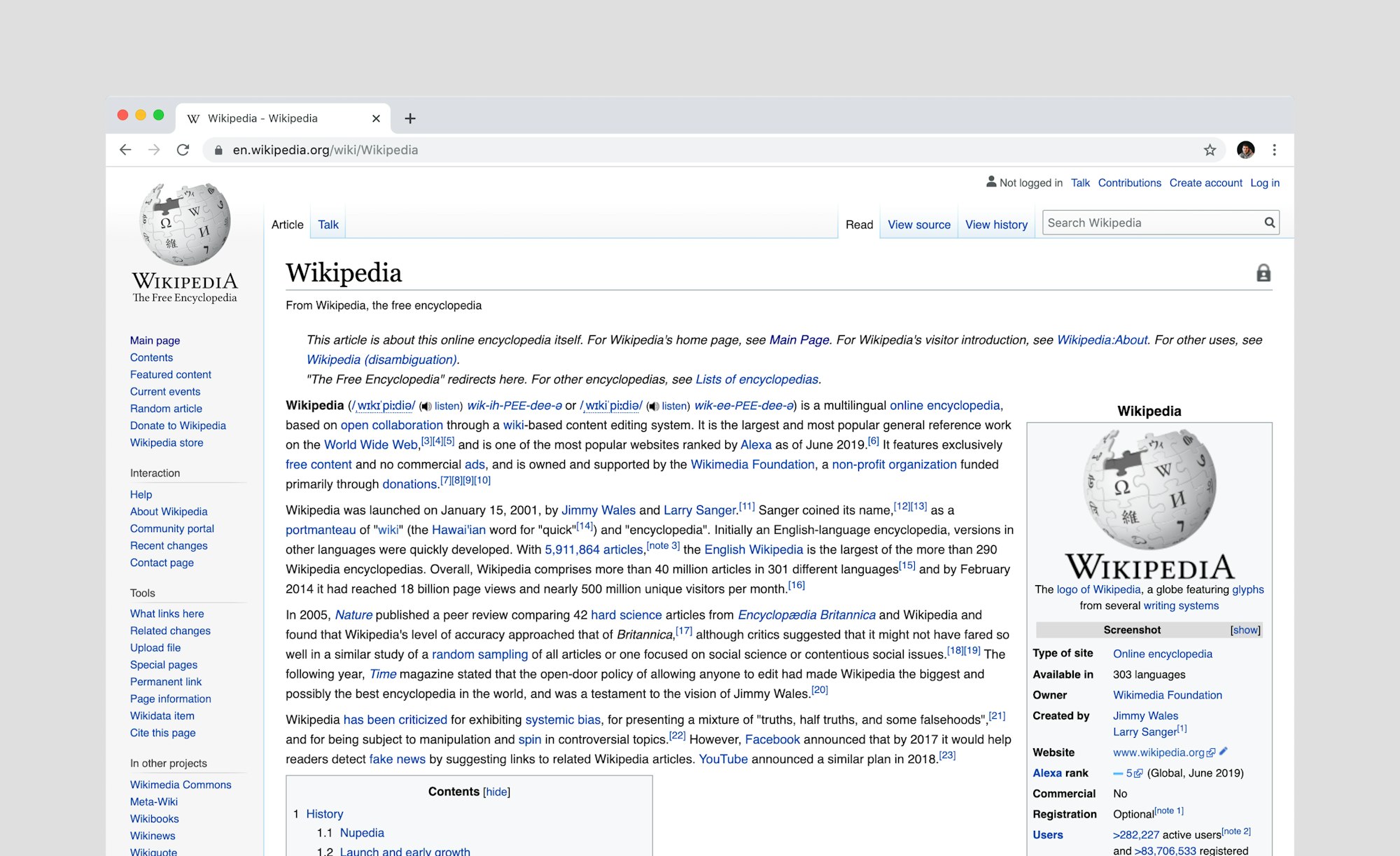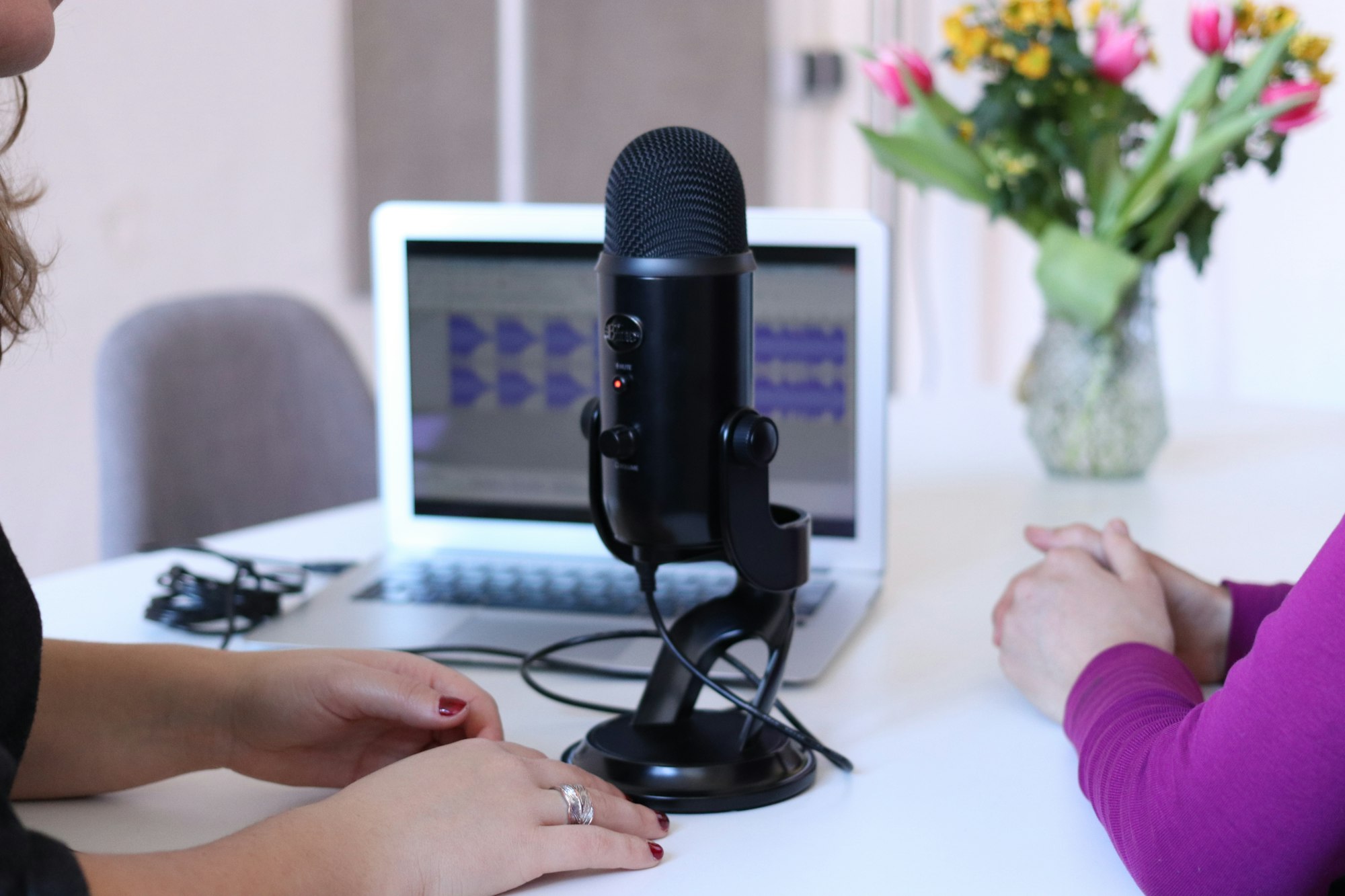This article attempts to summarise most of the ways in which you can improve your Spanish. At the time of writing, this is by far the largest compilation of language learning ideas you can find in one place on the Internet. There are many ways in which you can push yourself outside of your comfort zone. Some of them are obvious, while others might be considered unusual.
Introduction
Learning Spanish is a life-long journey that requires serious dedication and constant strive for improvement. If someone tells you it took them only a couple of months to learn the language, ignore them. They are lying.
Become your own teacher
There is only so much that a course in Spanish can teach you. You might be able to learn the basics enough to be adequate in trivial daily situations or as a tourist visiting a Spanish-speaking country but that's pretty much it. You will quickly start experiencing the law of diminishing returns as you realize that a standard teaching environment can only take you so far.
If you really want to take your Spanish a step further, you have to look for other ways of learning. You have to become your own teacher, in a sense.

Some people believe that the best way to teach someone how to swim is by throwing them at the deep end. This mindset might be even more effective in the case of language learning. At least, you do not have the risk of physical drowning.
Throw yourself at the deep end
The secret to becoming fluent in Spanish is to get yourself out of your comfort zone and into the "deep end" of the language. Just like in the case of swimming, there will most likely be an initial period of fear, panic, an overwhelming sensation resembling "drowning", accompanied by the inability to "stay afloat" using your current knowledge of the language. You have to push past that period. You will be surprised by how quickly you will progress afterwards.
There is more than one way to "throw yourself at the deep end" of Spanish. The aim of this article is to give you enough different ideas to choose from so that whenever you get too comfortable or tired of doing the same thing, you can quickly find a fresh new way to improve your Spanish.
1. Visit a Spanish-speaking country
This is a great idea irrespective of your current level of Spanish. Perhaps, you are still in the stage where you are considering whether to take on the journey of learning Spanish. This would be a perfect moment to visit one (or more) of the many countries where Spanish is the official language and fall in love not only with the language but also with the people, their culture and traditions.

There are more than 20 countries to choose from. Have in mind that different places may have different flavours of Spanish. If you are just starting out, you may prefer to stick to countries with larger populations, e.g. Mexico, Colombia, Spain or Argentina, as that guarantees that you will get exposed to popular varieties of Spanish.
If you are more advanced and want to experiment with the different ways in which Spanish is spoken, you can focus on the countries with smaller populations as well as specific regions of the bigger countries which are known for their regional dialects. There is a virtually unlimited variety to choose from given that the Hispanosphere includes nearly half a billion people.
2. Attend a Spanish course abroad
If you are serious about improving your Spanish, then attending a Spanish course in a country where Spanish is the official language may be the thing for you. Unlike standard language courses that you can take in a local school or online, courses abroad will have you surrounded by Spanish 24/7.

Just like any course, these courses will usually involve a significant amount of classroom activities. The nice thing about this is that you will be able to practise your Spanish every day in a structured way together with other motivated people, some of whom may even become your close friends.
In addition to all the structured classroom activities, you will also have the opportunity to practise your Spanish in the wild. The real world will not care what level you are at. You will have to learn to manage. The complete immersion in a Spanish-speaking country is an invaluable experience and one that will stay with you for a long time (in a good sense).
One really nice website where you can find Spanish courses abroad is at GoOverseas. You can also check out EF. There are, of course, many other places you can find online. Listing them deserves a separate article in its own right.
3. Move to a Spanish-speaking country
This is the most extreme option from the three listed so far. Not many people are willing to relocate to a different country just to improve their Spanish. Usually, there are other reasons as well, e.g. a desire to live and work abroad and a general pull towards the Spanish culture and way of life.

Being the most extreme option, it is also the most effective way of improving your Spanish. There is no substitute for the full immersion in a Spanish-speaking country.
An additional bonus is the fact that most Spanish-speaking countries enjoy nice weather and lots of sunshine all year round.
You can always combine moving abroad with the previous idea and go through a structured language course to kick start your Spanish journey.
4. Make Spanish-speaking friends
You are not ready to move to a different country, yet? That's fine. You can still improve your Spanish by finding Spanish-speaking friends. Depending on where you live you may already know some people for whom Spanish is their first language. If that's the case, don't be afraid and go "all in".

Simply go to them and start a conversation in Spanish. Chances are they will be pleasantly surprised and follow along. It might feel weird or uncomfortable at first but by practising you will start feeling more confident.
If you don't know anyone whose native language is Spanish, you can still check if any of your friends speak or have learned Spanish at some point. If you have a friend like that then you can practise together. Beware, if neither of you is proficient enough, you may end up learning incorrect phrases and expressions.
Another thing to be mindful of when practising with another learner is incorrect pronunciation.
5. Go to Spanish meetups
Don't worry if you don't know anyone speaking Spanish. There are plenty of Spanish meetups that can help you find friends who share your passion.
Going to Spanish meetups can help you improve your conversational skills as well as your listening in a relaxed environment. You will also meet many new people who share similar interests as you.

If your first meetup is a success, use that momentum and keep up the good work by continuing to go regularly. If it wasn't, don't despair. There are plenty of meetups organised all the time in different locations. You will find the perfect match sooner or later.
The best way to find meetups in your area is by either googling or checking for facebook events near you. You will find both virtual and in-person meetups. Choose whichever one feels more convenient for you.
In the unlikely case that there are no meetups in your area, you can organise one yourself. Chances are, there are people who would be interested but were too shy to organise it themselves.
6. Practise regularly
There is an old Latin saying:
Repetitio est mater studiorum.

Irrespective of how you decide to learn, the secret to success is constant practice. Try to practise every day if possible. You may find that scheduling a 15 minute slot in your calendar helps you stay organized. Regular practice will make it easier for you to remember words and phrases.
You want to push yourself out of the comfort zone into continuous improvement. If you want to see change, you must challenge yourself. It has been shown that deliberate practice will help you improve more compared to random practice.
7. Set short-term goals
An old Chinese proverb says:
A journey of a thousand miles begins with a single step.
It is easy to say that you want to improve your Spanish but how exactly are you going to achieve that? If improving your Spanish is a thousand-mile journey, what would be a single step?

Perhaps, your first step would be learning to talk about the weather in Spanish. An example of a short-term goal, in this case, would be to learn 10 relevant expressions and their pronunciation.
Having a short-term goal will keep you focused and give you ways to measure your success. Also, every time you reach a goal, your brain will produce dopamine, which will make you happy and give you a sense of achievement.
8. Set long-term goals
Your long-term goals could be to feel comfortable speaking Spanish and to have a decent vocabulary. When you reach this stage you will be able to infer the words you are not yet familiar with and tell the difference between accents.

Be patient, long term goals take a lot of investment but the benefits you will rip will be plenty. There is nothing more rewarding than talking and listening to people in their own language. Perhaps you can even employ some of your newly learned skills at work.
At this stage, you could decide to give back and help out some of the people that are just beginning their journey of speaking Spanish. You will know all the secrets of the trade and become a master.
9. Find out how you learn
Every person has their own way of learning a new language and learning in general. Learning is a personal thing, and all you need to do is find out what style benefits you the most.

There are many different articles out there advocating for one way of learning or another. The best one for you will be the one that helps you improve and have fun in the process.
If you are not sure what your style of learning is, try on a few varied ones before deciding. For example, talking to people is one way of learning and for many people, the way to learn a new language is to just go out there and talk their way into being fluent.
Remember, persistence is key, you will get better at focusing and remembering words the more you apply your learning method, whichever that might be.
10. Ask for help
In the words of Shannon Noll “Everybody needs a little help”, so be brave and ask for help when you need it. Help can be asking a friend to help you practise, going to a course or engaging in a language swap exercise.

Whether it helps with reading, writing or pronunciation, ask for the support you need to improve and reach your goals. The help you need will depend on the level you are at, and your own style of learning.
You will find that most people are willing to help. Various psychological theories suggest that personal self-worth is related to how helpful people are. Let people help you. Chances are everyone will benefit.
11. Review past study
We are all looking ahead in exhilaration for that new book or that new course that is available for Spanish language learners. However, we all have our limits. It is only human to forget what we have so eagerly learned a few months ago.

It is important to scroll back or flip back the pages of your notebook to the lessons you have already learned. Review of past lessons is best done when we are on the boundary of forgetting.
Do you feel like you are starting to forget the words learned in that class from a few weeks ago? Maybe some of the words related to describing the weather are starting to vanish from your vocabulary. It has been a while and that’s completely normal. This would be the perfect time to take a break from the new and brush up on the old.
12. Spanish newspapers
Spanish newspapers can be great resources to practise reading as well as learn new words. Reading newspapers can allow you to tailor learning to your interest. Sport? Politics? Art? There will always be something to keep you engaged in your Spanish learning journey.

If you stick to the daily topics you like, you boost your background knowledge, which in turn will allow you to infer the words you don’t yet know. Newspapers are guaranteed to have the grammatical structures and vocabulary used in the correct context. Find a newspaper you like and invest a few minutes every day reading and browsing articles.
13. Learn root words
The root word is the most basic form of a word. When you know the meaning of a root word you can break down long complex words into smaller units and discover their meaning.

The root can be in any part of the word that carries meaning. It can be at the beginning of the word, the middle or the end. Prefixes, suffixes, and bases are types of root words. The prefix appears at the beginning of the words while the suffix is at the end. The base can usually be found in the middle of a word. Spanish prefixes don’t have any meaning by themselves and can only be used in conjunction with pre-existing nouns or verbs.
Learning root words will get you familiar with their meaning, and help you guess other words derived from the same roots.
14. Start with the first meaning of words
As in any other language, Spanish words can have multiple meanings. In fact, the Spanish language has tons of words with multiple meanings. Don’t despair, start with small bites, and start by learning just the first meaning.

Once you have a good vocabulary base, for which you know the first meaning you can expand by learning the secondary meaning by inference or by using the dictionary. This should be somewhere on the list of your long-term goals.
For now, start by learning the first meaning to create that fluency you need, to allow for improvement.
15. Learn to infer
Sometimes when we read Spanish texts, we don’t quite know all the words. This is the case especially when we first start reading longer texts. Before running to the dictionary, or searching for the word on google translate, take some time, and see if you can infer the meaning of the word from the context.

Inferring is like being a detective, you deduce the meaning based on the available evidence plus previous knowledge and experience. Inference also goes deeper than just what is explicitly stated on the page to what is also implied by the writer.
If you are just starting, validate your inferred meaning to make sure you are right. It will get easier and easier as you practice and gain confidence in your newly acquired Spanish language skills.
16. Think in Spanish
Thinking of the right word in Spanish can take time when you are trying to remember the translation of the word.

Some good ideas for learning to think in Spanish are to keep a diary, written or recorded. It does not have to be perfect. It’s more about getting your ideas and thoughts directly in Spanish as opposed to thinking about the translation of each word.
Have some time to spare? Waiting at a bus stop? Commuting? Try describing the things around you in Spanish. You can do this anywhere and will allow you to get used to thinking in Spanish, as well as show you the areas where your vocabulary can be expanded.
17. Practise speaking
Did you find a friend with the same passion for Spanish as you, yet? The easiest way to practise speaking is with a speaking buddy. But if that person hasn’t been found yet, there are other ways to practise.

Whenever you are in the mood you can improve your speaking by yourself. Try to say what you are thinking aloud, in Spanish. Some people, when they try to do this ad-hoc their mind gets blank and they can’t think of anything to say. That is why trying to set topics and giving yourself time (2-3 minutes) to improvise on them can be a great idea.
If you are a telenovela follower, you can try answering back to your favourite character in Spanish. Or perhaps fighting with the antagonist. Everything is allowed as long as it is said out loud. Try to focus on the flow of your speech at first. Grammar will come as you learn the rules and get more experienced.
Improve your speaking with SpeakyReads

Another great way of practising your speaking is by using a tool specifically designed for the task. If you are sufficiently advanced, you should try the reading mode of SpeakyReads. It allows you to first listen to how a native speaker reads a paragraph, then record yourself doing the same and eventually compare your recording with the original side by side.
18. Practise listening
Here is a fun fact. Children can distinguish a wider variety of sounds than adults. This ability gets lost with age as we focus more on a single language, and the regional accent associated with that language becomes dominant. As a result, we become less likely to distinguish unique sounds specific to other languages.

An important part of re-learning this lost ability is by listening to native Spanish speakers. Listening regularly to movies or podcasts in Spanish can increase our ability to hear the difference between words.
And the best part is you can tailor this to your own interests. Make it a habit to spend some time listening to Spanish and you will improve both your accent and your ability to understand much more than on the first day.
Improve your listening with SpeakyReads

Provided you are at an advanced enough level, you can use a tool like SpeakyReads to practise listening. SpeakyReads has a growing library of classic audiobooks split into hundreds of paragraphs, desgined to accelerate your language practice.
19. Practise spelling
If you’ve read the previous ideas, you will already know that practice makes perfect. That is only true if you practice the correct way, though. If you keep practising the wrong word that is what you will end up remembering. Spelling is an important component of communication.

85% of the people around the globe are connected online and communicate via messages and emails. Although we now benefit from all sorts of autocorrection and spelling software, it is still very important to be able to spell correctly.
Spelling is not only a foundation but a catalyst for a wider comprehension of the Spanish language. It will offer you an underlying understanding of the relationship between combinations of letters, sounds, and the resulting words. This will increase your reading skills and comprehension.
Practise spelling regularly using online games or by simply spelling words and checking them with a dictionary.
Improve your spelling with SpeakyReads

If you are already practising your speaking and listening with SpeakyReads, then why not also improve your spelling in dictation mode. In this mode some of the words from the auio paragraphs are hidden and you have to guess them by listening to the recording. Warning: This can quickly become addictive.
20. Practise writing
Once you have a basic understanding of spelling you can start practising writing larger fragments of text. For example, you can start keeping a diary or a blog.

Writing practice will help you recognise patterns in texts that you read in other places and contexts because you will be able to look at them from the point of view of a writer.
Writing is also related to memory. You are more likely to remember words if you have used them in some of your writing.
Writing is also a communication and job skill. If you want to get a Spanish pen friend or perhaps move and get a job in a Spanish speaking country, being able to write will be mandatory.
21. Sing Spanish songs
Music is a great way to connect culturally and take down barriers. Learning the lyrics will help you improve your vocabulary and even your accent.

Repeating songs is a proven way to expand and master vocabulary. Think about it as a fun alternative to repeating sentences in a class, with background music. Music by its nature invites participation, so it will feel like no effort at all as you practise your listening and speech.
Vocabulary is much easier to remember when it comes to a catchy tune. Singing along will allow you to listen and repeat as well as learn how to link words together, thus improving your pronunciation.
22. Keep a vocabulary notebook
Keeping a notebook will help you improve your Spanish skills. It will enable you to keep track of new vocabulary as and when you hear it.

You can write down just words, or entire phrases. This way you will practise your spelling, and make correlations between the moment you heard those words or phrases, and the context around it. As a result, you will be able to remember them easier.
Having a notebook means you have your notes organised and you won’t lose any information. You can also go back and review to reinforce your learning. Looking back on the words and phrases will help you understand and remember them. The more you refresh the words in your mind, the more likely they are to remain there. Keeping a notebook is a great way to do that.
23. Learn some grammar
The main word here is “some”. The secret to learning Spanish is finding the balance between study and practice. Speaking Spanish fluently isn’t the same as knowing perfect grammar. However, grammar should be your friend.

Grammar is the glue that connects your vocabulary together. Without it, you would just have a list of words like a cheat sheet. In fact, Spanish has a gender-based grammar, so instead of having one word for a noun, you will have two representing masculine and feminine.
By just listening you will pick up some grammar, but by reading the rules you will understand the structure behind it. Remember, practice makes perfect, so learn some and then try and apply.
24. Set your phone to Spanish
Setting your phone to Spanish might seem counterintuitive, but it will make you think in Spanish. You will be able to associate day to day events directly to Spanish words as well as learn some new words in the process.

If you don’t feel prepared for your whole phone to be in Spanish, you can start gradually by setting just some apps. When you have the knowledge of the app context and a new word, you will easily infer the meaning.
By switching some apps or the entire phone to Spanish you will absorb new vocabulary and phrases naturally, without any effort or intent.
25. Get a pen friend or go to a chat room
It cannot be said again, but the best way to learn a new language is by practice. If you want to practise your writing, you can join a chat room or get a pen friend.

If you are relatively new to Spanish, having the time to write emails will be less pressure, than on-the-spot exchanges of a chat room. You can adapt your practice to your level and your preference by choosing wisely.
Many people look for pen pals’ sites just to learn new languages, so don’t be shy. You will also make a friend in the process.
26. Listen to Spanish radio
No matter what stage you are at, or how you feel about listening, it is still very important to practise your listening. You probably know that one of the main sections in many language tests is listening. That’s because listening is vital to understanding and communication.

An easy way to get that accent just right, and learn how to distinguish sounds in Spanish is by simply listening to the radio in Spanish.
It’s an activity you can do at any time and you can also pair that with listening to something that interests you. There is a wide range of channels available to pick from.
27. Use the "shadowing" technique
Shadowing is a language learning technique where you listen to a recording and simultaneously echo what you hear. It is designed to make you focus on the sound of your language and develop pronunciation as close as possible to native speakers.

As you do this, you will also start to pick-up vocabulary and grammar rules seamlessly. Shadowing will also get you to follow the natural flow of the language, developing the intonation. Intonation is the way the pitch of your voice goes up and down as you talk. Both accent and intonation are important for achieving fluency in Spanish.
You should choose an audio resource you can easily replay.
SpeakyReads is a great tool which can be used for shadowing. It has audiobooks split into hundreds of individual paragraphs for you to practice with. You can record yourself reading the paragraphs and compare your recordings with those of the original native readers.
28. Learn from your mistakes
So you are making some mistakes? That is great, it means you are practising your Spanish skills. Don’t be afraid to make them, but also don’t be quick to forget.

Remember the mistakes you make and learn from them. You might have pronounced a word the wrong way or got the wrong gender when referring to a noun. That is perfectly normal. Try to learn from this and improve. As long as you are making new mistakes it means your vocabulary and grammar are evolving.
Take some time after you realised the mistake to reflect upon it. This is the best way to assimilate the correct way and remember. Mistakes provide feedback so use them wisely.
29. Cook Spanish recipes
The preparation of food, the cuisine, has been part of human nature and culture since the beginning of time. It is deeply rooted in the geographical, historical and economic environment of the specific area you are interested in. Spanish cuisine is a big source of pride in Spanish culture. Plus, we all love eating.

If you want to improve your vocabulary and impress, Spanish restaurant vocabulary is a must. Also, we remember easier things we associate with emotions, in this case, the pleasure of eating.
Try cooking some Spanish recipes by following the ingredients in Spanish. Or going to a Spanish restaurant and ordering from the Spanish menu.
30. Language swap
One of the popular methods of learning a new language is language swap. You can do it online or in-person, depending on your preference.

You can practice Spanish and teach in return, by engaging with native speakers. You and your language buddy can structure your lessons as you wish. You can have structure or just free speech about whatever comes to mind. It’s all up to you. This is an advantage that not many learning resources can offer.
This might sound intimidating but with the language swap, you and your language buddy are on an equal playfield. Everyone is giving and receiving in return, a balanced exchange.
31. Talk about your hobbies
One of the topics that come up most often when making friends and making small talk is passions and hobbies. And what better way to spend your time than talking about the things you like to do in the language you want to learn, Spanish. You will combine the excitement of your hobbies with the excitement of learning Spanish – a win-win situation.

Talking about your hobbies in Spanish will give you the opportunity to expand your vocabulary in the area that you are most likely to use when connecting to people.
Learning how to list your hobbies will be simple enough, the work will be to memorise and use the vocabulary needed to describe the different activities and what it is that you like about them.
32. Spanish anime
Some days everything is so crazy that it’s nice to be able to detach and watch some anime. Here is one that is Spanish in origin, so you can enjoy it in the language it was intended.

You can also watch your favourite one but dubbed in Spanish. This will allow you to relax and learn Spanish at the same time. Amines are quite varied and have something for everyone. They are also suitable for all ages.
Anime has its own global community, so you can always reach out and perhaps find a native Spanish speaker with the same interest in anime like you.
33. Use YouTube
If you are looking for Spanish content YouTube is one of the richest places to go to. YouTube users have many options for the sort of channels they want to watch. One popular type of channel being the ones dedicated to language learners.
Different channels focus on teaching beginners to advanced levels. You can select vocabulary, listening, or grammar. So just take your pick and choose what you want to see today.
YouTube has other types of channels, as well, like some that offer subtitled films and TV shows in Spanish, or native channels. You can adapt your content to your mood and interest and also learn Spanish at the same time.
34. Listen to audiobooks
If you enjoy long walks or just lazy days on the couch, audiobooks are for you. They are great for leisure time as well as improving your Spanish.

Listening to an audiobook can help you improve your vocabulary and pick up the accent and the intonation by hearing how the words are pronounced and how they go together. Audiobooks are good in general. They offer the flexibility of listening anytime anywhere with the learning language benefits.
You can also use audiobooks to listen and repeat, shadowing the native speaker that is reading the book. There are a lot of public domain books available in Spanish, so have a look.

If you visit the SpeakyReads library, you will find a number of Spanish audiobooks split into individual audio paragraphs for you to practice with.
35. Watch TV in Spanish
This section could have also been called “How to improve your Spanish from the couch”. For people who have recently moved to Spain, the most common advice for learning Spanish is to just watch TV.

It’s a language immersion from the comfort of your own place. Because let’s face it, talking to people is nice, but so is doing nothing on the couch. You can turn on the subtitles, or not, up to you, and just follow the pronunciation and the rhythm of the language.
Don’t stress yourself out trying to remember it all, even passive listening while you do something else will help, including a nap here. You will get accustomed to the tone and things will begin to fall into place. You will learn to hear the different sounds of the language and infer the meaning of the words you don’t know.
36. Listen to podcasts in Spanish
Not a TV fan? I get it. The sheer effort of selecting a TV from the many available makes you not even want to consider.

How about podcasts then? Some people like doing most things from their phones and this includes listening to YouTube or just online podcasts. Be it learning, travel, history or news or anything you can imagine, there is probably a Spanish podcast out there that can stimulate your imagination. The only issue you might have is selecting. What some people do is listen for a bit and if it’s not their style, they move on to something else.
What are the benefits of listening to Spanish podcasts? Don’t get me started. You can broaden your vocabulary and go at your own speed. You can hear native speakers and adjust to the accent. You can learn a lot of new topics and the words that they come with. And you can listen to as much as you want or have time for, any time, anywhere.
37. Listen to lectures in Spanish
Should you watch lectures to learn Spanish or just lectures in Spanish? Good question. It’s up to you. The point being, you can find both options online and adapt to your liking and your rhythm.

You can start by listening to some dedicated language lectures and progress to expand your vocabulary in the areas that interest you. You can have a look for lectures in domains you are interested in, that are given in Spanish.
If you are considering moving to a Spanish speaking country, listening to a lecture, in Spanish, relevant for your job could just provide that vocabulary that you will need for your next employment.
38. Online exercises
Verbs, adverbs, numbers, time, complex or simple – it’s all out there. All the exercises you can think of and more.

So far, you have spent most of your time listening and talking. You have shadowed and you have listened to lectures. You have spent a bit of time picking up some grammar. All this to bring you to the point where you can evaluate your level and plan your next steps.
Have a look at some online exercises and honestly evaluate your level and your progress. Doing so will allow you to know what you know but also to know what you don’t know.
You can realise you need to focus more on grammar or perhaps more on listening or spelling. Either way, doing exercises will flush out what you have missed and will give you some good leads to continue your Spanish language learning journey.
39. Find an online tutor
Tutors can be of great help. Sometimes they can give you the kick in the right direction that you need or stop you from procrastinating.

Sometimes after a long day or a long week, dare not say, even more, it’s hard to do that extra step and go out of our comfort zone. Here is where tutors fit in. They can provide that gentle nudge in the right direction. Plus, let’s face it, no one likes to be found unprepared for the lesson, so that is extra motivation.
Tutors can also provide a structure to our way of learning by guiding us in the right direction and by flagging out the mistakes we make.
If you feel you need direction or tailored advice, don’t hesitate and contact a professional.
40. Read Spanish history
If you are a big fan of Spanish culture, you will enjoy reading about its history. And to add a nice twist to it, you could read this in Spanish.

As your vocabulary and reading are improving, a nice next step is to challenge yourself with more advanced, more informative readings, such as history books. This will allow your vocabulary and reading to improve in new directions, by adding a new set of words and expressions to the mix. This will take you from the day to day slang talk to a more formal one.
In your long-term goal, this could be the next step. Find a nice history book in Spanish and take your language to the next level.
41. Watch telenovelas
Spanish language, like its culture, is quite a passionate one. One of the most dramatical types of TV series to watch are telenovelas. Your vocabulary will be bombarded with new words and expressions regarding all aspects of life.

This is because conversations in telenovelas revolve around all sorts of unlikely events, like long lost evil twins that are coming to take someone’s place, unexpected pregnancies and disappearances, betrayal and, last but not least, comic relief. You are likely to learn some words you might not even know in your native language.
There are many available telenovelas out there so choose one that speaks to you so you can enjoy it and boost your Spanish at the same time.
42. Learn common words and phrases
When you are planning to travel abroad to a Spanish speaking country, the best preparation would be learning common words and phrases. You might say that your vocabulary is already rich enough but still, travelling will need some specific words that you might not encounter in the books or TV shows you are following.

Asking for directions is one aspect you can consider. You could also learn some phrases that will cover your health and wellness. It might not be so obvious but describing the symptoms of a cold could prove a challenge if it’s the first time you are trying it. And no one wants this type of challenge on top of feeling unwell.
Other words and expressions can cover accommodation related topics. Asking for toilet paper or a towel or whether tap water is good for drinking. Other aspects can be shopping questions or phrases related to emergencies. As some wise person said, better safe than sorry.
43. Learn cultural expressions
Has it ever happened to you to listen to a phrase, know all the words and yet not understand the meaning? Or rather the hidden meaning behind?

You will always be a young grasshopper in Spanish as long as you don’t learn the meaning of cultural expressions employed by native speakers. Understanding and using these expressions will add richness to your speech and will allow you to take yet another step on your Spanish learning journey.
These expressions will unlock ways of thinking and traditions. You will not find these phrases in dictionaries so look them up when you hear them and remember that repetition is the best way of learning.
44. Go to Spanish restaurants
If you enjoy eating more than the process of cooking, then perhaps you can delight your senses and learn Spanish at the same time. You can do this by visiting local Spanish restaurants in your area and reading the menu as well as ordering in Spanish.

If your waiter is Spanish, and depending on where you live, this can be more or less likely, he will be delighted by your initiative and play along.
This way you will enrich your vocabulary and enjoy some good food. Spanish people are proud of their cuisine and of their language, so it is a win-win situation. Spice up your vocabulary and your taste buds in one go.
45. Watch movies with Spanish subtitles
Imagine you have just moved to Spain and you get invited to the cinema to see a Russian movie subtitled in Spanish. Needless to say, it may be a frustrating experience at first.

Watching movies is a good way to learn a language. You are probably used to listen in the language you want to learn and read in a language you already know. But things will be different if you are in a movie theatre in a Spanish-speaking country. There, you will have to read the subtitles in Spanish.
Being in the cinema will make you pay more attention and stay all the way to the end despite not understanding much. You will have an incentive not to admit defeat after the first 5 minutes of frustration.
46. Transition words
The advice to learn transition words may sound intriguing at first, perhaps because you have never split your own phrases into verbs, nouns and transition words, or haven't thought too much about it.

Transition words are used to link words, phrases, and sentences. They help the reader to progress from one idea to another, creating a coherent flow within the text.
You can learn how to structure your arguments and stories by using transition words. But first things first. You need to learn some of these transition words, as well as the appropriate context for using them.
47. Free Spanish online courses

There is a theory that when you pay for something, like a course, you are more likely to follow through and learn from it. I don’t deny this, but I am also a big believer in free useful content. So, don’t discard free courses that you can find online. Take what you are given and make good use of it.
You can find free courses on YouTube, on general learning platforms or on dedicated language learning platforms. There are many options you can choose from that will allow you to tailor your training to your needs.
48. Polite vs Impolite
We have all heard stories of meetings where non-natives trying to tell a story in a different language accidentally used an impolite word that made it oh so funny. Some of us might have even participated in the spreading of such a story. But the truth is, no one would ever want to be the person the story is about.

When learning Spanish, as well as any other language, learn also what is polite and what is impolite for the specific culture. We are used to our own language where words have a specific weight to it, but the unfamiliarity with another language will make that hard to anticipate.
It can take a lot of time for you to become confident in distinguishing between polite and impolite forms of speech and writing. In fact, native speakers very often find it hard to make the correct judgement themselves.
49. Practise verb conjugation
Grammar is important especially when you want to distinguish present, past and future while telling a story or relating events. If you want to get the conjugation and the endings right, the only way is to practise.

You can do this alone or in a formal environment, like a class. But the material you can find by a simple search is more than enough to get you started conjugating the most common verbs.
Grammar is important for communication, especially if you want to move on to the next level or relocate and work in a Spanish speaking country.
50. Try Spanish immersion
Spanish immersion is when everything around you is in Spanish. All you hear, see and read is in Spanish. You can do this in a formal way by going to Spanish immersion classes organised by tutors or you can get the same thing by visiting a Spanish speaking country and avoiding completely to speak and relate in any other language.

The point is, all you eat and breath should be in Spanish. This way you will push the limits of your vocabulary and knowledge, and you can force yourself to assimilate the Spanish language fast.
It might seem strange, but it is a proven way of learning and improving. Our brains are incredibly adaptable, so if you want to learn fast this might be just the trick that you need.
51. Read short stories
No matter what level you are at, one way to improve is to read short stories in Spanish.

There are endless resources out there, some intended as literature and some specifically designed for learning. You can select the one that suits you and your level. The nice thing about short stories is that you can read them anytime and they can help you extend your vocabulary.
Repetition is one the secrets to successful learning, so reading again one of the short stories you liked will be easy and productive. You might not understand everything but that is the beauty of it.
The process of searching for the word you did not understand will ensure you will remember it in the long run. Reading will also boost your capacity to understand grammatical structures, so in a way, you will also assimilate Spanish grammar.
52. FluentU
FluentU is a language learning platform that presents learners with videos with interactive subtitles to simulate an immersive language learning experience. They have a wide variety of available content to help you learn Spanish.
Their content is dedicated to users of all levels. It has a well designed and sleek interface that makes it easy to navigate and it also comes with an app. You can use FluentU at any point throughout the day, even during your commute.
FluentU has enough content to keep you busy for a while and Spanish is the second-best in terms of the number of videos available.
53. Duolingo
Duolingo advertises learning Spanish in just 5 minutes a day. If you are a beginner and are looking to ramp up your Spanish vocabulary this can be a fun way of doing so. If you have not seen Duolingo memes I would also suggest looking for some. They are equally as funny.
With Duolingo you can practise reading, writing and speaking. And the basic account is free if you don’t mind ads and don’t make too many mistakes. They also have a premium account that is ad-free and you can track your progress.
Duolingo is a nice way to get you started with the basics of Spanish and it will send you reminders when you forget to practise. You will have listening exercises, flashcards and multiple-choice questions to test you on words and phrases.
54. EdX
Learning is done more and more online, so learning platforms are appearing everywhere. They give you the flexibility to learn at your own pace and fit it with your schedule. No more taking time off from work and rushing to get to a class.
Edx is one example of a learning platform that can help guide your steps through your Spanish learning journey. You have a wide range of university-level courses from some of the best universities out there. Most of them can be audited for free or you can pay to get a certificate.
There are dedicated courses for all levels so you can select the one that suits you best. Give the free courses a go and see how far you want to take it. If you are considering a job or a promotion that is related to being able to speak Spanish, having a certificate will definitely help.
55. italki
If you are looking for an online tutor for Spanish, italki is one of the places you can look at. They have a large number of tutors and the trial sessions have discounts. You can tailor the time of the session to something that is suitable by having a look at the calendar that is displayed.
Having a tutor wraps in the benefits of a trained professional, real live interaction and on-the-fly feedback. You will be able to practise and ask questions to enrich your vocabulary and perfect your pronunciation.
A tutor will also give you structure when it comes to grammar and might be able to answer questions the friend might not know the answer too, even if they are native Spanish speakers.
56. Bilingual texts
Bilingual text and articles are actually a thing. There are resources out there that allow you to see side by side English and Spanish articles. Some of the texts are also accompanied by audio so you can listen to how the words are pronounced and the flow of the language.
You can use these resources to improve your vocabulary, grammar and pronunciation. By listening you will be able to adjust to hearing the different sounds in Spanish. If you hear or read a word that is unfamiliar, you can just look at the mirrored text and find it’s meaning. Also, remember to write it down so you can go back and practise.
57. Watch kids cartoons
Would you like to keep the kid inside of you happy and learn Spanish in the process? Or perhaps you have a child, and you like to learn Spanish together? A good way to do so is to watch cartoons in Spanish.

Learning with cartoons is fun and effective. You will be able to learn naturally and benefit from the cartoon’s way of teaching kids’ new concepts. The language will be easy as they are designed for children and they will show pictures and music that will help you memorise the words. Most cartoons are specifically designed to teach so why not benefit and learn Spanish like this?
If you still have trouble following you can always put on subtitles and learn by reading the words as they are pronounced. Since they are cartoons, the dialogue will never be too fast, so it will be easy to follow.
58. Flashcards
When I think of flashcards, I imagine these little pieces of cardboard with words written on them. But since the invention of the smartphone, those flashcards are a thing of the past, we are now in the era of the digital flashcards.
There are many apps you can use that will help you learn Spanish with flashcard like functionality. You can use the existing flashcards, or you can make your own. Flashcards are in effect helping you practice your vocabulary. On one side you have the word in Spanish and on the other, you have the one in English. You can also have on one side the word in Spanish and on the other side a picture.
By conjuring your memory to find the right word and repetition you will expand your vocabulary and make it easier to speak and listen. I like the ones with pictures as they stimulate thinking in Spanish. You don’t have to translate the word in your head, you will make a direct connection between the image and the word in Spanish.
59. Experiment with dialects
When you start learning Spanish, you start with a neutral dialect. Only after you are somewhat used to the sounds do you start hearing the specific regional or different country dialects.

If you are planning to visit or to move to a specific Spanish speaking country, you should make sure you are accustomed to that dialect. If you are enrolled in classes in your local area, chances are you are learning from a non-native or even if they are a native, they will have experience with one or two dialects at most.
To learn the different dialects, you can listen to books read by natives in different dialects or listen to Youtube videos created using different dialects. Another option is to try on different tutors based on the area they are originally from. You also have some choices of movies coming from different areas that have different accents.
Have a look online and see how well you can distinguish the accent and the dialect.
60. Read Spanish philosophers

With the caveat, you should do this in Spanish, of course. Have you tried reading philosophy in your own language? If so, you would know philosophers love to use very elevated, very complex ways of conveying meaning. This means every phrase you see will pack a lot more than the mean meaning of the words put together.
If you want to put your Spanish skills to the test, try reading some of its philosophers and see how many new words and new meanings of old words you can capture. This will take you from the base level of just understanding the first meaning of words and phrases to understanding the contextual meaning. It will allow you to assimilate a lot more but not necessarily in a shorter period of time. Philosophy is meant to be savoured, so read slowly and reflect on what you see.
61. Describe things in Spanish
Language evolves differently depending on the place where people live. That is why for example Eskimos have so many words describing snow.

But we don’t want to expand the Spanish vocabulary just yet, even though sometimes might feel like some words we made up should be in Spanish. Rather we want to practice the words we know and link them together into coherent phrases.
This is an exercise you can do anytime anywhere. Look around, select something and try to describe what you see in Spanish. Let your imagination loose and unleash your Spanish vocabulary. The more varied scenes you will select to practice on, the more you will go through all the words you know. Additionally, it will link the visual context to the words in Spanish helping you to start thinking in Spanish. If you don’t know a word you are thinking of, note it down and look it up when you can.
62. Learn prepositions
Yes, we are again and again taking a step back to the basics. Whether you are advanced or just starting out you will know learning the basics is important.

Prepositions precede the word or words they link. They come in all sizes, so you can have simple short prepositions, made up of only one word, or you can have compound prepositions made up of multiple words.
In most cases, their use and placement in the phrase are fairly logical. However, there are a few exceptions that need a bit of extra attention. Prepositions will answer the questions where, when and how. So you see how using them correctly can alleviate ambiguity in the message you want to convey.
63. Memrise
Memrise is another Spanish learning app. It is fairly similar to Duolingo. It presents words and phrases with flashcards, listening exercises and more.
When you encounter a new word, you can write a note on it with anything that you associate to remember it. Later on, when you see the same word the notes will appear helping you jog your memory, hence memrise.
You can also see short videos for words being pronounced by native speakers. The recorded natives will pronounce the word and try to give clues as to what it means by facial of physical gestures. It is all revolving around the way we relate things when we learn a new language. Memrise will stimulate your memory to enable you to memorise Spanish easier.
64. Babbel
If you want to learn Spanish, a bit of practice every day will take you a long way. A tool for learning and practising is Babbel. Tools are very useful, especially if you don’t live in a Spanish-speaking country and the opportunity is scarce to talk to natives.
Babbel uses a multiple-choice or listening exercise to enhance your vocabulary and accent. It also has conversational examples to show you how to use the words in phrases or more complex engagements as it would naturally be when discussing with someone. One of the nice things it offers is a bit of speech recognition that makes you speak words back with the ultimate test being if your phone recognises the word you just said.
65. Translate into Spanish
You are fluent now and want to give back? Or are just looking for a way to improve further and continue practising? Either way, translating into Spanish is a good answer to both.

Translating will expose you to new words as well as exercise your writing and grammar. It also means writing down words, which is an important process for memorising them. Step by step you will move on from literal (word by word) translation to a free translation.
Free translation to Spanish should be your goal. This means you understand not just the words but the meaning of the text. In the free translation, you will provide a sentence that means the same but not necessarily using the direct translation of the original words.
66. Learn key Spanish verbs

If you learn just a list of Spanish words, it will not be too useful in real-life conversation. Most of the things we do depend on actions and actions are defined by verbs. Additionally, sentences are incomplete in the absence of verbs.
When you are learning Spanish vocabulary, most verbs will be listed in their infinitive forms, this is the “to” form. The infinitive is the raw form that will need to be conjugated to represent the time and person.
You should first look up the most basic verbs and then practice their conjugation.
67. Join Facebook groups
The two things I like most about groups is that you get to hang out with people with the same interest as you and the content just keeps pouring. Since groups generally have so many people, every other minute some new content will be displayed. It can be like a perpetual source of ideas and information.

You can see useful tips and tricks, find a cheap tutor or some new resources you can use. Also, Spanish learning groups will have policies so people only or mainly post in Spanish, creating that Spanish immersion feeling that will allow you to assimilate new words.
In my experience, however, groups will address a beginner to an intermediate level so it will not be enough on its own. But keep your eyes open for resources you might use, you never know when something might just fall in your lap.
68. Do some maths
If you are planning to visit a Spanish speaking country, or perhaps even moving there someday, knowing numbers and how to count will be a must. Contactless payments will only get us so far, especially in rural areas or farmers markets where payments are still made in cash. This is the reason why you would want to learn the numbers.

But why learn math in Spanish? It turns out that doing math exercises in Spanish can increase your cognitive flexibility. It will challenge your brain enough to allow you to train your memory and response speed. You will pay more attention than when just speaking and a bigger area of your brain will be stimulated.
Overall, you can benefit from expanding your knowledge and adjusting your brain to a new language. Don’t be tempted to cut corners.
69. Sign up for mailing lists in Spanish

You can subscribe to any email list you are interested in, it can even be an ad list. The point here is to get exposed to new words bit by bit every day.
The emails should be short and sweet, you don’t want to spend ages reading them unless that is what you are looking for. Personally, I was just looking to get that 5 minutes of practice every day with a content that is similar and yet slightly varied.
70. Teach someone else
Giving back will make you feel good about yourself. Remember when you just started, and you were struggling to find Spanish speaking friends and tutors? Someone else might be just at the same step now. You can help that person get started and guide them through the same journey.

What do you get in return, you might think? Apart from the joy of sharing? Well.. you don’t truly know what you know until you try and teach it. When your new student starts asking questions this will flush out the areas where your knowledge is lacking, or where there are things you might have forgotten. Memory is fleeting, so we will forget things bit by bit, especially when we haven’t truly understood them to begin with, or when we didn’t repeat them often enough.
By giving, you will get back Perhaps your new student will have different hobbies, so you can learn new words as well. You will also get to test the limits of your grammar knowledge.
71. Rhinospike
Rhinospike allows you to submit a text in Spanish and have it read by a native speaker.
If you do the same thing in return, by reading in your native language, this will bump you up in the queue so you will get the text you need back faster. You can also browse the archive and listen to old recordings.
Rhinospike Spanish language learning revolves around you listening to the text and picking up vocabulary and accent.
72. Translate from Spanish
Perhaps easier than translating to Spanish is transiting from Spanish. Easier because at least your writing skills will not be challenged, and you can seemingly pick this up as you translate.

However, your understanding and reading skills will be challenged. You will get to progress from literal translation to more complex forms, where you not only translate the words but the meaning. This will challenge your ability to read in between the lines in Spanish and will engage you in providing a comprehensive.
This translation from Spanish happens anyway when we read in Spanish, but only by going the extra mile and writing down the translation will you advance your comprehension skills.
73. Keep a diary in Spanish
I have elaborated many times on the importance of thinking in Spanish, and you have done exercises such as describing things around you in Spanish. You have perhaps written emails and chatted in Spanish, but how about a more self-oriented activity?

Writing things down stimulates our memory and is one of the advised ways of learning things. Be this in your native language or another language. This is why we take notes and write things down in school.
One idea is keeping a diary in Spanish. This way, you will repeat the words and challenge your memory, trying to describe how your day went. You will also practise your writing skills and grammar. This is one activity you can do alone at any time of the day, a flexible way to improve your Spanish. The words and phrases you use will also evolve as you get a better grip on the language.
74. Change your computer and your social media to Spanish

Perhaps you have tried changing one or two apps into Spanish. This will provide the next step in your Spanish learning journey. Try and change your computer and your social media in Spanish.
Strange at first, but still worthwhile if you want to get used to thinking in Spanish. This will give you that feeling of language immersion we have talked about and will get you to respond quickly to things you see in Spanish. As you get used to things being in Spanish around you, you will spend less and less time translating what you see and rather just assimilate directly in Spanish.
75. Read the ingredients in Spanish

Help the small shops and Spanish goods resellers thrive and help your Spanish in the process by buying Spanish products and reading the labels in Spanish. Of course, this doesn’t have to revolve only around food, but these are the most accessible goods we can find, plus soap ingredients in Spanish would hardly be useful in a day to day conversation.
This will pair nicely with cooking Spanish recipes or going to Spanish restaurants, as it is contributing to the base vocabulary you will need for both. We all know how Spanish speaking people never truly consider something Spanish unless it comes from their country. If it’s hard to find products with a label to read, you can always fake this by reading online.
76. Wikipedia in Spanish

Did you know that the content of the Wikipedia page is not always the same depending on the language you read it in? The content is not a translation in all available languages.
In any case, ever wondered what does the Spanish content add or explain? When you read something on Wikipedia, no matter what it is, take a moment to improve your Spanish and your knowledge by giving a quick glance to the Spanish page. Sometimes you might find additional information. You will improve your knowledge of your topic of research and your language skills at the same time. Next time you visit Wikipedia give it a try and see how the content varies.
77. Read comic books in Spanish
In a way, comics can be seen as more elaborate, more fun, and a better experience all around than Flashcards. You have the text and the picture to go with it. They are also relatively short, unlike novels and books so it will give you a quick win.
Reading comic books in Spanish will allow you to exercise your inference capabilities. When you find a word you don’t know you can look at the picture and try to guess what that means. Comics are mostly made of dialogue. The vocabulary, and the way phrases are formed, will be very relevant if you are mainly targeting a conversational level.
You have a variety of comics to choose from. You can find something to keep you engaged and improve your Spanish as you go. Comics are a fun way of boosting your language skills.
78. Record yourself speaking Spanish
When we hear ourselves talk, we receive both sounds transferred from air conduction and sounds transferred internally through the bones. This makes the voice we hear richer in lower frequencies. This is also the reason why we don’t like to listen to ourselves speak. Perhaps with few exceptions but most of us don’t.

But in what way can you hear your accent and intonation other than by listening? If you want to progress and fix your accent you will need to pay attention to it. Find a recording you can play back and then record yourself saying the same thing. By sequentially listening to both, you will be able to see what sounds you need to improve and how your accent compares to the native speakers.
The more aware you are of the differences in your accent, the more you will be able to correct this. You will be able to see what sounds you are struggling with, and narrow down on those to move on to the next level in your Spanish speaking journey.
Also, you might be interested in checking out SpeakyReads. It is a unique tool in that it has audiobooks split into hundreds of audio paragraphs. You can listen to each paragraph (or parts of it) and then record yourself reading the same bit. Having done that, you will then be able to compare your recording with the original reading and identify where you diverge.

79. Start a vlog
Have you noticed how you get tired faster when you speak in Spanish compared to when you speak in your native language?
You need to speak a lot to get the same fluency as you have in your own language. And what better way to speak endlessly than by having a vlog. Record yourself speaking about everything and anything. Only by speaking about different topics, you will improve your fluency and vocabulary to the level of a native speaker.
You don’t have to make your Vlog public if you don’t wish to do so. You can use it for practice or perhaps in combination with a tutor that can give you feedback on your speech.
80. Compare with other languages you know

This is also known as learning by association. Spanish language has roots in Latin. This relates it closely to other Latin languages like Italian and French. But many Latin source words can be found in other languages like English. If you already know or speak a Latin-based language try relating the words between the two languages.
If you don’t know other languages closely derived from Latin, don’t despair. You don’t need to look further than plain English to make associations and compare. Spanish and English have many words that are common. These words are called cognates. Some of them are perfect cognates, some of them are near perfect. This cognates list is a good one to look at especially when you just start with Spanish.
81. Scrabble in Spanish
Yes, you know it. This is a tricky one and yet so much fun. You will need to brush up your vocabulary, and your memory, to be able to make words in Spanish, with the letters you are given.

The recipe for this is a Spanish scrabble game and some Spanish speaking friends. Remember the scrabble letters will not be the same for all languages, because of the different letters and the frequency of each letter within the specific alphabet.
You can also play online if you are not yet ready to invest in a new board. Whichever way you prefer, give it a go and try out your vocabulary. Practice and proactive searching for words in our memory is the best way to improve.
82. Have fun
Learning a new language is generally a passion or a hobby, although it can sometimes be a work requirement. It can definitely help with your job or moving to a Spanish speaking country.

Irrespective of the reason you are here, and why you want to learn, don’t forget to have fun. When it’s an enjoyable activity you will be more likely to remember, and to continue doing it.
You will also be more engaged, and more likely to want to go the extra mile to understand and remember. If you are not having fun, take a step back, and combine your learning with something you enjoy like music, movies, or travel. Learning is better, and we are more efficient when we are having fun and enjoying it.
83. Practise Spanish in Discord
Discord is a chatting app mostly used by people playing online games. If you are a fan of online gaming, this might be the thing to help you improve your Spanish.

You can both text and voice chat. Instead of going to your normal channels, select some that are in Spanish. You will find kindred spirits to talk to and learn Spanish from the comfort of your home.
If you are an introvert and prefer online activities, this would be the best alternative to going to Spanish meetups or looking for language buddies. The discord app works both with mobile and desktop platforms. Discord’s popularity has grown in the last years so chances are you will find many people to practise your Spanish with.
84. Host an exchange student
If you live in a university town, and you are looking to learn Spanish, you are in luck. You will need to look no further than the university itself.

When the new year starts, plenty of new students will join. You can host one of the Spanish students and practise your speaking skills with him or her.
They can benefit from a native hosting them, making them feel more welcome, and getting advice about the city, and in turn, you can benefit by improving your Spanish with the help of a native speaker.
Both parties can gain from such a collaboration.
85. Practise with SpeakyReads
SpeakyReads is an online tool for intermediate to advanced Spanish learners. The website can help you improve many aspects at once.

First, you can improve your accent and intonation. SpeakyReads provides multiple books read by native speakers, giving you a wide range of accents you can mimic. You can select the one you like, and record yourself reading the same text. By comparing side by side your recording with the native speaker, you can see the words and sounds you should improve on.

All the text comes from books so you can have fun and learn by reading your favourite book. This will improve your vocabulary too. You don’t know some of the words? No problem. Underneath each section, there is a link that will translate the entire paragraph.

Accent and fluency are not the only things you get to practice. You can also improve your writing skills in dictation mode. Dictation mode allows you to listen to paragraphs and fill in the missing words you hear. You can zoom in to a smaller section by selecting a start and end word both for reading mode and dictation mode.
You can be your own motivator by adjusting the number of paragraphs, minutes, and words you want to practice daily.
86. Take advantage of Google Translate
If you are just beginning and are struggling with expressing yourself, you can always use google translate. Google translate comes in many shapes.

You can scan and translate text. You can scan Spanish text and read the meaning to learn the words. Or you can do it the other way around, scanning things in English to see how to express them in Spanish. Either way a good method to enrich your vocabulary.
You can also have text be read aloud to hear how the words are pronounced and the flow of the language. If you are traveling and need to express yourself in Spanish, this can be a good point to start.
87. Learn phrases that you frequently use
Learning useful phrases and words in Spanish can be extremely beneficial. How about making it more personal by learning your own phrases and expressions expressed in Spanish.

You can look up how to translate your expressions or perhaps quotes you use. If you know fun facts in your language that you love, this can also provide you with material to translate and learn to express in Spanish. Make it personal and bring a bit of you in the way you speak and learn Spanish.
Start by trying to translate your favourite expression by yourself and only use translation and the dictionary if you really need to. This way, you can challenge yourself and progress even further.
88. Search Google in Spanish
We are all creatures of habit, so we will search on google in the language we are used to. If you want to boost your Spanish, disrupt that habit and start searching in Spanish.

It might be strange at first, but it will help you improve your vocabulary and teach you to think in Spanish. Next time you will want to search, you will train your mind to have your inner search in Spanish.
If you don’t have much time for Spanish classes or don’t want to bother with movies, this can be a nice quick way to keep practising Spanish every day, without going out of your way.
Also, the content can be varied and give you new perspectives on the topics you are searching for. If you are searching for something Spanish specific, it might even give you better results than a search in English.
89. Paraphrase
Paraphrasing is a way of expressing the same thing using different words. It keeps the original meaning but expresses it with different words.

If you want to test your Spanish skills, or if you are looking to improve your fluency and comprehension, try to read fragments of text in Spanish and then paraphrase it using different words. Find your own words to express the same ideas.
Paraphrasing will allow you to practise all aspects of your Spanish skills. You will test your understanding of the text. You will challenge your vocabulary, and you will also add to the mix transition words and grammar.
Find a newspaper or a book and try paraphrasing different sections. You can do this anytime. This will give you the flexibility to learn at your own pace.
90. Spanish quizzes in Spanish
Quizzes are becoming more and more popular for learning Spanish. They help you focus and identify gaps in your knowledge. They can also build up confidence and validate your level.

Most quizzes dedicated to learning Spanish are multi answers questions. They can test your grammar, vocabulary, or spelling. They present a fun interactive way of learning. They have different levels so you can be anywhere from beginner to advanced and still benefit.
Retrieval of words from memory helps retention. You will challenge yourself to use the information you have gathered so far. Since you can take quizzes in the comfort of your own home it will be less stressful than taking an exam. So before deciding to get a language certificate spend some time with online quizzes.
91. Practise small talk
If you want to break the ice, or are just in an uncomfortable moment of silence, small talk is useful in any language. Some people, like salespeople, have a natural disposition to be able to do it. For others, it can be something they learn.
If small talk comes naturally to you in your own language, then you know the pain of not being able to do the same in Spanish. Lucky for you, this is something you can train. You will need to have the relevant vocabulary, and you can do this by learning the words in whatever way you like.
You will also need to learn the "dos" and "don’ts" specific to the Spanish culture. Have a look at the different available resources, and then have fun practicing. You can practice with friends, or at meetups, but you can also do it at home as a warm-up exercise.
92. Prepare for a Spanish language exam
No one likes exams, and yet everyone knows exams are bound to come up. There are undeniable advantages in taking a language proficiency test.

First, you can use it as proof of your competency, for your job, or if you are looking for employment in a Spanish speaking country. This will demonstrate your level of knowledge and remove any possible doubts.
Secondly, taking the exam will have personal value. It will allow you to have an honest evaluation of your level, and plan for those next steps of progression. It will allow you to rejoice in the external validation of your level. It will also motivate you to progress your learning, so you can get a good result, and not procrastinate.
Don’t be afraid of the test. Only by knowing where you are, can you plan for where to go.
93. Adopt cultural aspects
What better way to immerse yourself in Spanish culture than by adopting the parts of it you like?

Have you ever tried the “tapas”? they are a national favourite and many bars and restaurants serve them. If you are not in the vicinity of any of these, you can try making some at home. Try following the recipe and reading the ingredients in Spanish.
How about time management? We could all take a lesson, in these chaotic times, from the Spanish, and take a step back and relax. Things can get done with less stress and less pressure. Everything has its time. Spanish people place more importance on personal relationships than on deadlines, which are considered flexible.
Take a lengthy lunch break called “siesta” and in the afternoon have a coffee break between 4:30 and 5. Have a look for the cultural aspects that match your style, and pair the language learning with cultural discovery.
94. Experiment with language learning apps
There are so many Spanish learning apps out there that could easily have made up an article called 100 apps to learn Spanish.

Perhaps you did not find your favourite app on this list? Don’t worry, that does not mean it’s not good. The app that you are happy with, and keeps you motivated, should be the app for you. We are all different and have different needs, and lucky the internet is so vast there is an app for everyone.
Look for the one that is adapted to your level and your interest and just use that to boost your Spanish skills. You might even enjoy using different ones at once depending on the context. Find your rhythm and go with it.
There are very few apps targeted at advanced learners and SpeakyReads is one of those. If you are at advanced level, feel free to give it a try.
95. Write reviews (music, film, books, hotels, restaurants etc.)
Reviews are always helpful, in any language. They help people get a better idea of what to expect or what they are buying. They also give good tips to help people decide if they want to visit a place or watch a movie.

Why not leave some reviews in Spanish? An avid Spanish culture supporter, like yourself, would clearly have many things to say about the Spanish movies, books, recipes, and places you have encountered so far.
By writing such reviews in Spanish, you will effectively practise for most of the sections that exist in a foreign language test. For one, you would summarise what you have heard and seen in Spanish. This will improve your understanding and vocabulary. Second, you will practise your writing and grammar. All this with the added benefit of providing your valuable experience and feedback.
96. Label things in your house with post-it notes

The easiest way to learn words is by association. The most common words you use will be words describing things around you. This is especially true when you are engaging in small talk or are at a beginner to intermediate level conversations.
Are you bored at home and looking for a fun way to spend time and learn some Spanish? Try labeling the things in your house with post-it notes. Write the words on pieces of paper and stick them to the objects. Every time you see them, you will directly associate the object and the word in Spanish, reinforcing your learning. Preferably, you should leave the post-its around for a while until the knowledge is well ingrained in your memory.
97. Describe objects and places on pictures, drawings and images

Would you like to expand your vocabulary more than just describing the objects around your house? Perhaps you can print out, or draw some places and objects for which you want to learn the word in Spanish, and label them. You should hang on to these images for a while to make sure you memorize all the relevant words.
If you can’t find a printer and are not much of a painter, you can simply cut out images from freely available newspapers and magazines and label them. Whatever you might be using, make sure to keep them in a visible place and review them as often as you can. By reviewing and repeating the words, you will boost your Spanish vocabulary.
98. Write short stories in Spanish
For people whose imagination is the limit, and don’t particularly care to keep a diary with mundane facts, writing short stories is a nice alternative.

If you want to combine this with learning Spanish, all you have to do is to write them in Spanish. Of course, we are all aware it’s easier said than done, so we are amazed and impressed by people who manage to do it.
From a language perspective, writing will undoubtedly expand your vocabulary. Creating stories will be easier for advanced Spanish speakers. If you are not there yet, don’t let that stop you, it’s never too soon to start. It might be more difficult, but it will fast-track you to success.
99. Learn quotes or poems by heart

We are all impressed when someone quotes a relevant phrase or poem exactly at the right moment, even more so when it’s in a different language. Perhaps the original language the quote or poem was written in? Quotes and proverbs are a way to capture wisdom through the ages.
Remembering them proves not only a good memory but also extensive knowledge and understanding. You can invest some time in learning quotes, poems, and even proverbs that could come in handy someday. The immediate benefit being that you will expand your vocabulary, and by regular practice, you will remember them. Repeating will also allow you to reflect on the meaning and understand more than just the literal translation.
The End
These should be enough to get you started.
